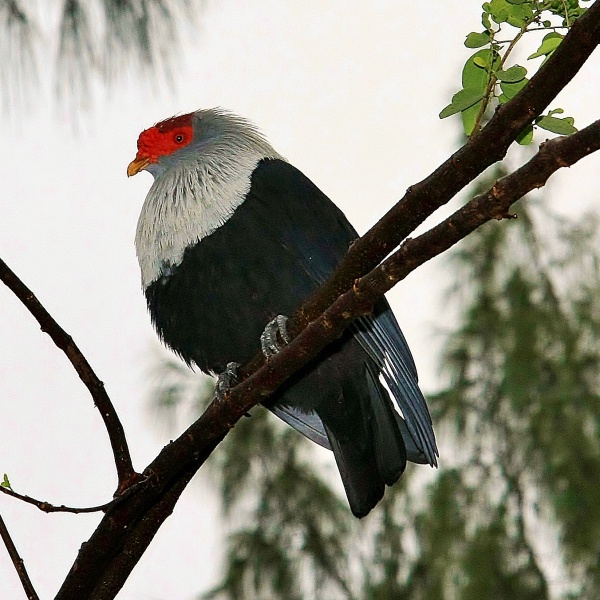Facts About Seychelles blue pigeon
The Seychelles blue pigeon, also known as the Seychelles blue fruit dove, is a striking medium-sized bird that inhabits the woodlands of the granitic Seychelles archipelago. Measuring about 10 inches in length, this pigeon is easily recognizable by its silver-grey head and breast feathers, dark blue wings, underbody, and tail, and a bright crimson patch of skin around its eyes. Its bill is a dull yellow, and it has dark grey legs. Juvenile birds look quite different, featuring a dark grey head and bib, dark greenish-brown upper parts, and a dark pink wattle around the eye.
This stunning bird is found on the larger granitic islands of the Seychelles, as well as on Denis Island and Bird Island. Since the late 1970s, its population has risen, thanks to the cessation of human exploitation for food. You might spot the Seychelles blue pigeon alone, in pairs, or in small groups. During courtship, these birds put on quite a display, performing aerial maneuvers before landing in a tree. The male then continues to court the female by bowing, cooing, and raising his plume feathers.
The Seychelles blue pigeon primarily feeds on seeds and fruit. While they can breed throughout the year, their peak breeding season is from October to April. The female constructs a nest from twigs in a tree or shrub, where she lays one, or occasionally two, white eggs. The eggs are incubated for about 28 days, and the chicks fledge approximately 21 days after hatching.
Once hunted for food and considered a pest by farmers, the Seychelles blue pigeon is now thriving. Conservation efforts have played a crucial role in this turnaround. These birds have muscular gizzards that break down seeds, ensuring their droppings do not contain viable seeds. Preserving their habitat is essential for their continued survival.
